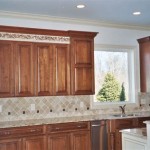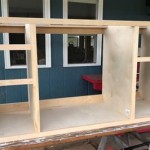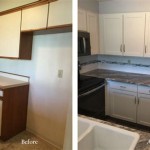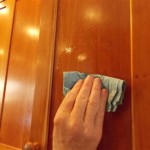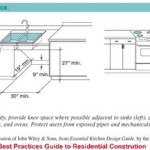How To Remove Formica From Kitchen Cabinets
Formica, a popular laminate material, has been extensively used in kitchen cabinets for decades due to its durability and cost-effectiveness. However, styles change, and homeowners often desire to update their kitchens by removing older Formica and replacing it with new materials, such as paint, wood veneer, or even new Formica designs. Removing Formica from kitchen cabinets requires patience, the right tools, and a systematic approach to avoid damaging the underlying cabinet substrate. This article provides a detailed guide on how to safely and effectively remove Formica from kitchen cabinets.
Before initiating the removal process, it is crucial to understand the composition of Formica and how it is adhered to the cabinet surface. Formica is typically a thin sheet of laminate composed of layers of paper and resin, bonded together under high pressure and heat. This laminate is then glued to the cabinet using a strong adhesive, often contact cement. Contact cement creates a powerful bond that can be challenging to break. Therefore, carefully planned steps are necessary to loosen the adhesive without causing undue harm to the cabinet's structural integrity.
Safety should always be the primary concern when undertaking any DIY project. Before beginning, it is imperative to gather the necessary safety equipment. This equipment will protect the individual from potential hazards associated with the removal process.
Essential safety gear includes: safety glasses to shield the eyes from flying debris, work gloves to protect the hands from sharp edges and chemicals, and a dust mask or respirator to prevent the inhalation of dust and adhesive particles. Ensuring adequate ventilation in the workspace is also crucial. Opening windows or using a fan will help to disperse any fumes released during the removal process.
Preparation is key to a successful Formica removal project. Gather all necessary tools and materials before beginning. This will streamline the process and minimize interruptions.
The required tools and materials include: a heat gun or hair dryer to soften the adhesive, a putty knife or scraper to lift the Formica, a utility knife to score the edges, a small pry bar for leverage (use with caution), mineral spirits or adhesive remover to dissolve residual glue, a clean cloth or rag for wiping, and sandpaper (various grits) to smooth the surface after removal.
Key Point 1: Softening the Adhesive
The primary challenge in removing Formica lies in overcoming the strong bond of the adhesive. Applying heat is the most common and effective method for softening this bond. A heat gun or a hair dryer can be used for this purpose. A heat gun is generally more effective due to its higher heat output, but it also requires greater caution to prevent scorching or damaging the underlying cabinet material. Start by setting the heat gun to a low or medium setting.
Direct the heat gun or hair dryer along the edges and seams of the Formica. Move the heat source slowly and evenly, maintaining a distance of a few inches from the surface. Overheating can cause the Formica to bubble or warp, making it even more difficult to remove. The goal is to warm the adhesive sufficiently to loosen its grip, not to melt the Formica.
After heating a section, test the bond by gently attempting to lift the Formica with a putty knife or scraper. If the Formica remains firmly attached, apply more heat to that area. Work incrementally, gradually loosening the adhesive along the perimeter of the cabinet.
Focusing on the edges is particularly important as these are the areas where the adhesive bond is typically strongest. Apply heat along these edges for a longer duration to ensure that the adhesive is thoroughly softened.
For larger surfaces, divide the area into smaller sections and tackle each section individually. This approach allows for better control and prevents the adhesive from re-hardening before the Formica can be removed.
Key Point 2: Lifting and Removing the Formica
Once the adhesive has been sufficiently softened, carefully begin lifting the Formica using a putty knife or scraper. Insert the tool between the Formica and the cabinet surface at a shallow angle. Apply gentle, even pressure to avoid gouging the underlying wood or particleboard.
Work slowly and methodically, gradually prying the Formica away from the cabinet. If the Formica resists, apply more heat to the area and try again. Avoid using excessive force, as this can cause the Formica to break into smaller pieces, making the removal process more tedious. It can also damage the cabinet surface.
A small pry bar can be used for added leverage in particularly stubborn areas. However, exercise extreme caution when using a pry bar. Place a piece of wood or cardboard between the pry bar and the cabinet surface to protect it from damage. Apply pressure slowly and evenly to avoid cracking or splintering the cabinet material.
As the Formica is lifted, continue to apply heat to the adhesive bond ahead of the scraper. This will help to keep the adhesive softened and facilitate easier removal. For large pieces of Formica, it may be necessary to have a helper hold the lifted section while continuing to work along the remaining edges.
If the Formica breaks into smaller pieces during removal, use the utility knife to score along the edges of the remaining sections. This will create a clean break and prevent the adhesive from pulling on adjacent areas.
Patience is crucial during this stage. Rushing the process can lead to damage to the cabinet surface and a less than satisfactory result. Take breaks as needed to avoid fatigue and maintain focus.
Key Point 3: Cleaning and Preparing the Surface
After the Formica has been removed, the cabinet surface will likely be covered in residual adhesive. Removing this adhesive is essential for preparing the surface for painting, veneering, or any other desired finish. Mineral spirits or a commercial adhesive remover are effective solvents for dissolving contact cement.
Apply the mineral spirits or adhesive remover to a clean cloth or rag. Gently wipe the affected areas, allowing the solvent to soak into the adhesive. Let the solvent sit for a few minutes to soften the glue before attempting to remove it.
Use the putty knife or scraper to carefully remove the softened adhesive. Be mindful not to gouge or scratch the cabinet surface during this process. If the adhesive is particularly stubborn, reapply the solvent and allow it to soak for a longer period.
Repeat the process of applying the solvent and scraping until all traces of adhesive have been removed. Once the surface is clean, wipe it down with a clean, dry cloth to remove any remaining solvent residue.
Inspect the cabinet surface for any damage, such as scratches, gouges, or imperfections. Use sandpaper to smooth out any rough areas. Start with a coarse grit sandpaper (e.g., 80-grit) to remove significant imperfections, and then gradually progress to finer grits (e.g., 120-grit, 220-grit) to achieve a smooth, even surface.
After sanding, wipe down the cabinet surface with a tack cloth to remove any remaining dust. The cabinet is now prepared for priming and painting, applying a new laminate, or any other desired refinishing process. The success of the refinishing project depends heavily on the thoroughness of this preparation stage.
When dealing with cabinets constructed from particleboard or MDF, exercise extra caution during the removal process. These materials are more susceptible to damage from moisture and excessive force. Avoid using excessive amounts of solvent, and be careful not to gouge or delaminate the surface. Consider applying a thin layer of wood filler to any damaged areas before sanding and priming.
Proper disposal of the removed Formica and cleaning supplies is an important final step. Check local regulations regarding the disposal of laminate materials and solvents. Dispose of the Formica in accordance with these regulations. Place used rags and solvent-soaked materials in a sealed container before discarding them to prevent fire hazards.
Removing Formica from kitchen cabinets is a labor-intensive process that requires careful planning, the right tools, and attention to detail. By following these steps and exercising patience, homeowners can successfully remove old Formica and prepare their cabinets for a fresh, updated look. Remember to prioritize safety and take precautions to protect both oneself and the cabinet surfaces during the removal process. With careful execution, the kitchen cabinet can be transformed, giving a refreshed and updated look.

How To Remove A Prefab Formica Countertop

How To Remove Formica Kitchen Countertops Sew Woodsy

How To Remove Laminate Backsplash

How To Remove Formica Kitchen Countertops Sew Woodsy

How To Remove Laminate And Paint A Kitchen In Single Day

How To Remove Formica Countertops Take Your Kitchen From Outdated Updated

How To Remove Formica Counter Tops

Painting Laminate Kitchen Cabinets Cuckoo4design

How To Remove Formica Kitchen Countertops Sew Woodsy

How To Remove Theril Vinyl Wrap Melamine From Cabinet Doors
Related Posts



